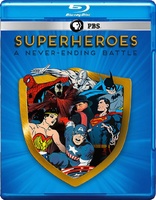Superheroes: A Never-Ending Battle Blu-ray Movie
HomeSuperheroes: A Never-Ending Battle Blu-ray Movie 
PBS | 2013 | 168 min | Not rated | Oct 15, 2013Movie rating
7.5 | / 10 |
Blu-ray rating
| Users | 0.0 | |
| Reviewer | 4.0 | |
| Overall | 4.0 |
Overview
Superheroes: A Never-Ending Battle (2013)
Examines the dawn of the comic book genre and its powerful legacy, as well as the evolution of the characters who leapt from the pages over the last 75 years and their ongoing worldwide cultural impact. It chronicles how these disposable diversions were subject to intense government scrutiny for their influence on American children and how they were created in large part by the children of immigrants whose fierce loyalty to a new homeland laid the foundation for a multi-billion-dollar industry that is an influential part of our national identity.
Starring: Grant Morrison, Joe Quesada, Liev Schreiber, Mark Waid, Len WeinNarrator: Liev Schreiber
Director: Michael Kantor
| Comic book | Uncertain |
| Documentary | Uncertain |
Specifications
Video
Video codec: MPEG-4 AVC
Video resolution: 1080i
Aspect ratio: 1.78:1
Original aspect ratio: 1.78:1
Audio
English: Dolby Digital 5.1
English: LPCM 2.0
Subtitles
English SDH
Discs
50GB Blu-ray Disc
Single disc (1 BD)
Playback
Region A (C untested)
Review
Rating summary
| Movie | 4.0 | |
| Video | 3.5 | |
| Audio | 4.0 | |
| Extras | 3.0 | |
| Overall | 4.0 |
Superheroes: A Never-Ending Battle Blu-ray Movie Review
Funny books are serious business.
Reviewed by Brian Orndorf October 28, 2013We live in a special time for comic book fanatics, with characters great and small receiving a shot at big screen glory, helping to augment a revolution that began decades ago on the page and grew into an inescapable industry. “Superheroes: The Never-Ending Battle” is a three-part highlight reel of comic book evolution hosted by Liev Schreiber, who examines amazing developments that transformed seemingly silly, small-time super men into legends, tapping into the psyche of readers who fantasized about such heroism and mysterious powers, highlighting a reoccurring presence of awe as artists, writers, and corporate players sit down to discuss their participation in trends and invention as the saga of the comic book unfolds.
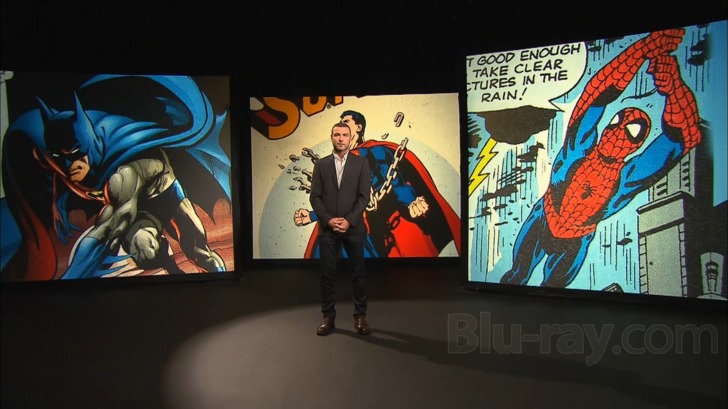
“Superheroes: A Never Ending Battle” gathers some major industry players to help walk the viewer through the years, with Stan Lee, Joe Simon, Todd McFarlane, Michael Chabon, Adam West (who also voices Batman in comic panel animation), Gerry Conway, Lynda Carter, and Neal Adams a few of the names contributing anecdotes, fears, and triumphs as they discuss their history in the business. The conversations are fascinating, revealing how characters came to life, changes in the comic book world, and artistic attempts to pull off surprises when the status quo demands mediocrity. Although it isn’t a thorough education on the span of comic book entertainment, “Superheroes: A Never-Ending Battle” cherry picks key developments and creative inspirations, allowing the viewer to appreciate the blood, sweat, and tears that went into the creation of the costumed personalities.
Episodes:
“Truth, Justice, and the American Way – 1938-1958" (55:32)
Our introduction into the world of comic book is assisted by host Liev Schreiber, who chats up his respect for the art form. The story commences with the release of “Action Comics #1,” which introduced the world to a heroic character named Superman, created by Jerry Siegel and Joe Shuster, who were paid $130.00 for 13 pages of work. As comic books caught on with the public, companies began to form (many mob-backed), with some, including DC and Marvel turning out quality work, while others, such as Fox Feature Syndicate, were churning out knockoff characters, flooding the market. Highlighting the ethnic makeup of the industry, the episode delves into workplace conditions, which resembled factory floors, while artists had no expectation of retaining copyrights. The rise of the pulp books is delved into, submitting The Shadow to hungry readers, soon influencing the world of Batman and his iconic struggles with the first supervillain, The Joker. With Captain Marvel, the concept of fantasy was introduced, a necessary distraction as WWII heated up, allowing Captain America to storm the scene with his propaganda-style adventures intended to help the war effort. The influence of artists Jack Kirby and Joe Simon is dissected, while rampant racism during the WWII era of comics is investigated. With young girls left with little to inspire them, Wonder Woman is called into duty, with her sexually suggestive art surprising many. Post-war, parents groups and government leaders pushed back against the industry, with the book “The Seduction of the Innocent” by Frederic Wertham leading the charge against violent imagery and influence, resulting in the establishment of the Comic Code Authority.
“Great Power, Great Responsibility – 1959-1977" (55:28)
Facing artistic doldrums, writer Stan Lee decides to take a shot with “The Fantastic Four,” revitalizing the fortunes of Marvel Comics. This newfound direction of superhero neuroses proves to be a hit with readers, finding Lee (and Steve Ditko) moving forward with “Spider-Man,” their take on teenage angst. Returning to racks with newfound depth is Captain America, finding fresh purpose with emotional content. The creation of “Pop Art” is explored, with Andy Warhol and Roy Lichtenstien leading the charge with their comic book influences, paving the way for the debut of the “Batman” television show, which immediately found an audience and revived the title. The saga of artist Jim Steranko is recounted with his work on “Nick Fury,” displaying sophistication that confused his publishers. The turbulence of the 1960s and call for racial diversity results in the introduction of characters such as Black Panther and Luke Cage, while a special issue pairing the Green Arrow and the Green Lantern discusses social issues of the day. The rise of feminism heralds the return of Wonder Woman, with the ensuing television series supplying an accurate representation of the hero’s ideology. As the 1970s devolved into scandals and violence, darkness crept into comic books, finding “The Night Gwen Stacy Died” shocking readers with its gut-punch conclusion. Finally, the rise of the antihero is detailed, with the take-no-prisoners attitude of The Punisher singled out as a defining tone for a troubled time.
“A Hero Can Be Anyone – 1978-Present" (55:33)
With the release of “Superman: The Movie” in 1978, comic book entertainment finally found its ideal representation onscreen, while Siegel and Shuster received their due credit and financial compensation. To boost readership, stunts were arranged, including the marriage of Spider-Man and Gwen Stacy. As the 1980s carried on through rough political changes, the era was reflected in work such as “The Dark Knight Returns” and “Watchmen,” challenging industry standards with their bleak view of aging valor. With the X-Men, readers were offered an inspirational look at a team of outsiders uniting, with breakout star Wolverine charming readers with his antihero ways. The story of Todd McFarlane and the birth of Image Comics is recounted, detailing how the “Spawn” series sought to disturb the complacency of the industry. With “The Death of Superman,” the rise of overeager comic collecting began, with perceived value driving mediocre sales. In the aftermath of 9/11, artists struggled to communicate grief through nobility. And the future of comic book interests is explored through a new range of cinematic efforts, video games, and online readership, finding an alternate direction of reader engagement as print slowly dies out.
Superheroes: A Never-Ending Battle Blu-ray Movie, Video Quality 
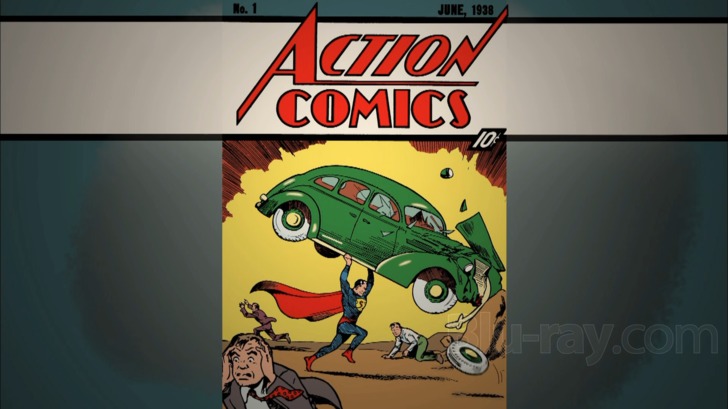
The AVC encoded image (1.78:1 aspect ratio) presentation is stitched together from a variety of film and video sources, while interviews range in age and camera quality. There's not a uniform look to the documentary, but differences aren't jarring. Banding is present throughout, and there's motion blur to contend with. Colors have the benefit of vibrant comic book pages, and primary hues look nice, bringing out the vibrancy of the art. Fine detail also grasps the textures of the page with fibrous images, and interviews provide an adequate read of facial particulars. Blacks are supportive and true, while skintones generally look natural.
Superheroes: A Never-Ending Battle Blu-ray Movie, Audio Quality 
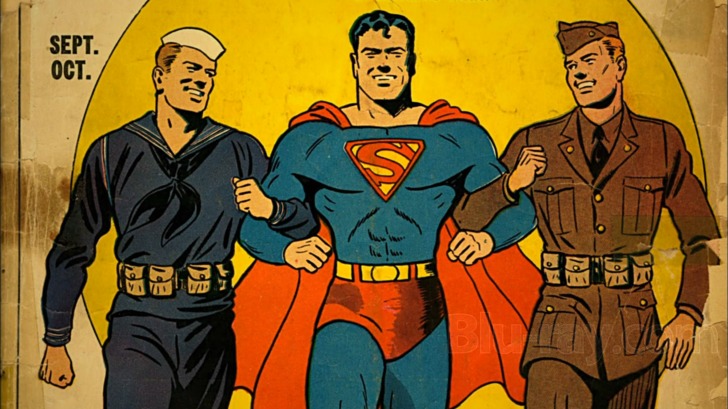
The 5.1 Dolby Digital sound mix carries a pleasing energy, with scoring full and frisky, providing instrumentation as it energetically supports the visual event. Interview audio is crisp and true, with nothing lost during the extensive conversations with a multitude of professionals, their emotions and enthusiasm easy to detect. More combustible film clips bring a mild low-end presence to the track. It's a straightforward mix that doesn't carry out to the surrounds with any type of force, showing restraint but never timidity.
Superheroes: A Never-Ending Battle Blu-ray Movie, Special Features and Extras 

- Interviews (39:15, HD) with Lynda Carter, Jules Feiffer, Eddy Friedfeld, Stan Lee, Joe Simon, Jack Urbont, Michael Uslan, and Adam West cover a range of topics, including the concept of superheroes as a beacon of hope in dark times, the layout of candy store comic book displays, the shifting state of Superman's powers, the creation of superhero theme songs, the debut of the comic book convention, and the current state of violence in superhero movies. Unbroken chats, the interviews are allowed to breathe, allowing the participants to deliver their ideas and recollections in a thoughtful manner.
Superheroes: A Never-Ending Battle Blu-ray Movie, Overall Score and Recommendation 
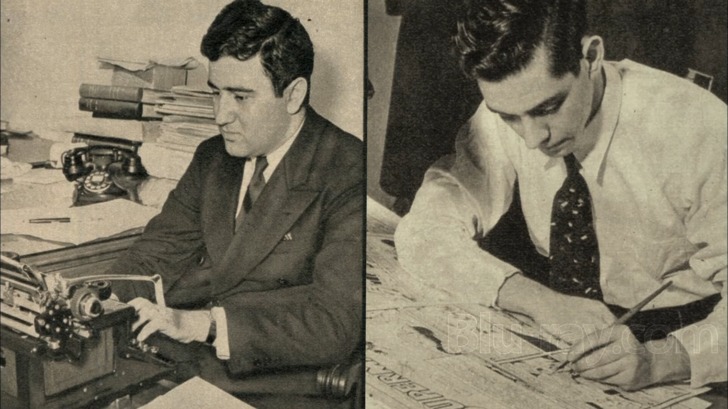
There's not much time to delve into the nuances of the industry, but "Superheroes" A Never-Ending Battle" does a terrific job understanding the ebb and flow of things, seizing the enthusiasm and ego that went into the work. It's a well-paced, informative program, especially valuable for those new to this geeky universe, generating a distinct impression of passion that gives comic books and their idiosyncratic creators new meaning, emphasizing artistry and creativity over repetition, making the nearly three-hour run time fly by. Faster than a speeding bullet.
Similar titles
Similar titles you might also like

Doomed! The Untold Story of Roger Corman's The Fantastic Four
2015

Necessary Evil: Super-Villains of DC Comics
2013

Dr. Strange
1978

Look, Up in the Sky!: The Amazing Story of Superman
2006

The Specials
20th Anniversary Limited Edition
2000

The Death of "Superman Lives": What Happened?
Kickstarter Exclusive
2015

Comic-Con Episode IV: A Fan's Hope
2011

Freedom Fighters: The Ray
DCU
2017-2018

Justice League: Gods & Monsters
DC Universe Animated Original Movie #24
2015

Batman: The Complete Television Series
1966-1968

Batman Ninja vs. Yakuza League
2025

RBG
2018

I Am Not Your Negro
2016

Best of Enemies
2015

Bowling for Columbine
2002

Black Lightning: The Complete Fourth Season
Warner Archive Collection
2021

All Superheroes Must Die
Vs
2011

Inhumans
2019

The Kitchen
2019

Watchmen: An HBO Limited Series
2019
